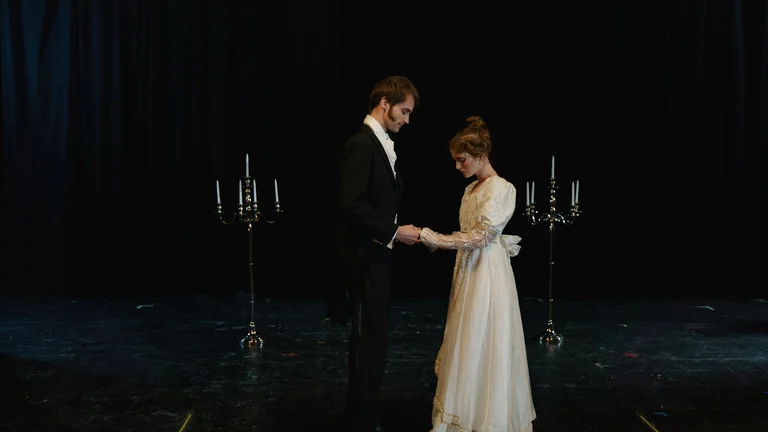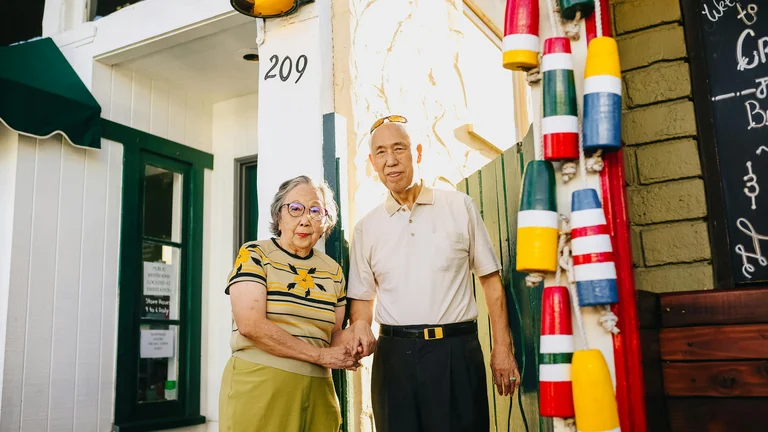Unraveling the Charm of Funny Misunderstandings in K-Dramas

The phenomenon of funny misunderstandings leading to love in K-Dramas remains an enduring narrative device that captivates audiences worldwide. These misunderstandings form the heart of countless romantic stories, creating tension, humor, and ultimately, affection between characters. The appeal lies in how these comical miscommunications introduce chaos and unpredictability to otherwise straightforward relationships. In K-Dramas, where nuanced emotional interplay and character-driven storytelling are paramount, the strategic deployment of misunderstandings propels the narrative forward.
What distinguishes these misunderstandings in Korean dramas is not merely their humorous nature but also how they act as catalysts for personal growth and intimacy. Misunderstandings often arise from cultural nuances, language ambiguities, or simple misperceptions, reflecting everyday social dynamics in exaggerated, entertaining ways. A seemingly minor mix-up—like overhearing fragments of a conversation or mistaking intentions—can spiral into intricate plotlines that challenge the characters' trust and understanding.
Moreover, such scenarios foster vulnerability among protagonists. In moments of confusion, guards drop, and genuine emotions surface. Viewers become engrossed, anticipating resolution while enjoying the comedic relief these misadventures provide. These story beats, balanced finely between humor and sincerity, exemplify the artistry of K-Drama writing. Forging romantic connections through misunderstandings taps into a universally relatable human experience: the difficulty of clear communication and the serendipity of love emerging through imperfect connections.
Key Elements Behind Comedic Misunderstandings That Spark Romance
At the core of these story arcs lies a complex interplay of character traits, situational irony, and narrative timing. Each element carefully crafted to maximize emotional impact and entertainment value. Characters involved in funny misunderstandings typically exhibit distinct personalities that either clash or complement one another. For instance, a stoic, reserved male lead contrasted with a bubbly, outspoken female lead naturally creates opportunities for misinterpretations.
Situational irony plays a critical role. Viewers often possess more information than the protagonists, fostering dramatic irony that intensifies engagement. As characters fumble through awkward encounters, the audience anticipates the inevitable resolution of misconceptions. This tension-release cycle strengthens viewer attachment to the developing relationship.
Timing in delivering misunderstandings is equally vital. Writers strategically place these moments during key plot junctures—introductions, near-confessions, or turning points—to elevate emotional stakes. Such orchestrated disruptions prevent predictability and sustain suspense across episodes or an entire series.
Language and cultural factors also contribute distinct layers to misunderstandings. Korean honorifics, indirect speech patterns, and nonverbal cues can be lost or misread by characters, especially in stories involving culturally diverse or socially inexperienced leads. These subtleties generate comedic confusion while subtly educating audiences on Korean social norms.
Illustrative Examples From Popular K-Dramas: A Deep Dive into Misunderstandings
Delving into specific K-Dramas reveals how funny misunderstandings integrate seamlessly into the romance genre’s framework. Take, for instance, “Because This Is My First Life.” Here, the protagonists enter a marriage contract without traditional romantic intentions. Early comic confusion stems from societal expectations and personal insecurities, leading to heartfelt moments founded on misconceptions about each other’s motives.
Another noteworthy example is “She Was Pretty.” The female lead’s drastic physical transformation causes the male lead to fail recognizing her initially. This mistaken identity trope, while classic, gains freshness through witty dialogue and emotional depth. The humor arises from awkward interactions rooted in false impressions, eventually blossoming into authentic affection.
“Weightlifting Fairy Kim Bok-joo” offers a rich tapestry of misunderstandings originating from youthful inexperience and competitive environments. The lead couple's bumbling attempts to communicate feelings amidst sports training provide ample comedic relief, illustrating how timing and context amplify misunderstanding-driven romance.
Through these examples, one observes the versatility of misunderstandings: from mistaken assumptions about identity, accidental overhearing of private conversations, to misguided jealousy triggered by misconstrued events. Each type uniquely challenges protagonists to reassess their feelings and strengthens emotional connections through resolution.
| K-Drama | Type of Misunderstanding | Impact on Relationship | Comedic Element |
|---|---|---|---|
| Because This Is My First Life | Contractual misunderstanding about marriage | Forms reluctant partnership leading to romance | Situational awkwardness, social expectation clash |
| She Was Pretty | Mistaken identity due to physical appearance change | Initial distance turning into genuine affection | Visual comedy, ironic tension |
| Weightlifting Fairy Kim Bok-joo | Youthful miscommunication about feelings | Gradual realization of love amid training | Playful banter, situational irony |
| What's Wrong with Secretary Kim? | Misinterpretation of career ambitions and personal feelings | Growth in mutual understanding and attraction | Exaggerated reactions, slapstick moments |
Psychological and Emotional Dynamics Behind Misunderstanding Tropes
The success of funny misunderstandings in sparking romantic interest taps into fundamental human psychology. Cognitive bias, emotional defense mechanisms, and social anxiety frequently underpin these story devices. Characters often cling to preconceived notions or jump to conclusions to protect themselves from vulnerability, resulting in humorous but poignant scenarios.
For example, confirmation bias—where individuals interpret ambiguous behavior to fit their existing beliefs—drives many misunderstandings. A protagonist convinced they are disliked might misread friendly gestures as sarcasm. This misperception not only fuels conflict but also invites character introspection and growth.
Emotional defense mechanisms like denial or projection surface as characters attempt to shield themselves from uncomfortable feelings. A timid character might project jealousy to mask insecurity, provoking humorous confrontations. Meanwhile, social anxiety amplifies hesitation and awkwardness during interaction, heightening the comic aspect of failed communication.
The emotional payoff from resolving these misunderstandings is significant. When characters overcome initial confusion and reveal genuine intentions, their vulnerability fosters intimacy. This catharsis resonates deeply with viewers who relate to the complexities of expressing and interpreting emotions in relationships.
Systematic Breakdown: Types of Funny Misunderstandings Leading to Love
Understanding the range of misunderstandings provides insight into their narrative utility. Below is a categorized list detailing prevalent types found in K-Dramas, each with an explanation and example scenario:
- Mistaken Identity: Characters fail to recognize each other due to disguise, physical change, or misconceptions, creating humorous tension. Example: A lead returns after transformation, and the other fails to identify them.
- Overheard Conversations: Partial or out-of-context snippets of dialogue spark incorrect assumptions about relationships or intentions.
- Accidental Confessions: A character inadvertently reveals feelings or secrets, leading to embarrassment and subsequent comedic fallout.
- Cultural/Lingual Misunderstandings: Differences in language or customs cause misinterpretation of actions or words, especially in scenarios involving foreigners or traditional settings.
- Misplaced Jealousy: Characters suspect romantic rivals without evidence, triggering conflict and comic relief.
- Physical Mishaps: Awkward situations like tripping, wrong-room entry, or clothing malfunctions result in unexpected intimate moments.
- Erroneous Assumptions About Intentions: Misjudging the other’s motives in professional or personal interactions leads to friction and laughter.
How Such Tropes Reflect and Influence Cultural Norms
These recurring misunderstandings serve more than just entertainment; they mirror societal attitudes toward communication, romance, and gender roles in South Korea. The indirect communication style prevalent in Korean culture is often ideal fodder for comedic misunderstanding. Such indirectness respects social hierarchy and harmony but can confuse younger, emotionally inexperienced characters.
Additionally, gender expectations play into misunderstanding scenarios. Traditional roles emphasizing male stoicism and female emotionality create fertile ground for misinterpretation. For example, a man’s reserved behavior might be misperceived as disinterest, whereas in reality, it reflects a culturally gleaned way of expressing care.
Furthermore, K-Dramas sometimes challenge these norms by showcasing characters who defy stereotypes. When a female lead articulates thoughts plainly but is misunderstood due to others’ assumptions, it flips conventional gender dynamics, adding layers of depth and humor.
This interplay between reflection and subtle critique of culture makes K-Drama misunderstandings not only amusing plots but also commentary on evolving social behaviors. They encourage viewers to reconsider how communication nuances affect relationships and personal growth.
Case Studies: Step-by-Step Analysis of Misunderstandings Leading to Love
Examining specific sequences in episodes unpacks how misunderstandings are constructed and resolved, tracing the emotional journey of characters. Consider a classic scenario where two leads accidentally swap phones, misconstruing messages and photos.
Step 1: Incident occurs that triggers confusion (e.g., switching phones).
Step 2: Characters receive messages or see images that suggest unexpected relationships or secrets.
Step 3: Each character interprets these clues through personal biases, fueling suspicion or curiosity.
Step 4: Misunderstandings manifest as awkward encounters, covert investigations, or humorous accusations.
Step 5: Eventual confrontation leads to clarification, revealing honest emotions and intentions.
Step 6: Emotional breakthroughs strengthen bonds, transforming confusion into affection.
Such sequences excel because they blend relatability, conflict, and emotional payoffs. The structured escalation and resolution mimic real-life communication hurdles but in a heightened, entertaining fashion.
Practical Applications: Lessons From K-Drama Misunderstandings in Real Life
Beyond entertainment, analyzing these narratives offers insights into effective communication strategies. While comedic exaggeration is inherent, the core premise that misunderstandings arise from incomplete information and assumptions holds true universally.
Applying these observations can improve interpersonal relationships by encouraging patience and openness in dialogue. For instance, the importance of verifying facts rather than jumping to conclusions reflects a crucial social skill. Recognizing how misread cues or cultural differences affect perceptions can motivate more empathetic interactions.
Furthermore, embracing the humor in misunderstanding rather than frustration fosters resilience and deeper connection. Viewing errors as opportunities for clarification, growth, and bonding—as seen in many K-Drama arcs—can inspire healthier approaches to conflict resolution.
Comparative Analysis: How Korean K-Dramas Differ From Other Romance Media
While misunderstandings as romantic tropes are common worldwide, K-Dramas uniquely emphasize subtlety and emotional layering. Western romances may prioritize direct communication or overt conflicts, whereas K-Dramas infuse nuanced cultural contexts and restrained character expression, making miscommunication more believable and endearing.
Additionally, K-Dramas balance humor and sentiment without sacrificing narrative sophistication. The frequent use of situational irony and nonverbal cues embedded in Korean social interaction adds complexity often absent in other media. This approach results in storylines that resonate on multiple levels—comical, emotional, and cultural.
Moreover, the episodic format allows for slow-burn romance where misunderstandings can persist and evolve over time, intensifying viewer investment. This contrasts with shorter romance films or series that resolve conflicts rapidly. Consequently, the emotional payoff when misunderstandings untangle feels earned and more emotive.
Table: Common Misunderstanding Tropes in K-Drama vs. Western Romance
| Aspect | K-Drama | Western Romance |
|---|---|---|
| Communication Style | Indirect, context-heavy, nuanced | Direct, explicit, confrontational |
| Status of Misunderstandings | Long-lasting, emotionally layered | Short-term, often resolved quickly |
| Role of Humor | Subtle, situational, character-driven | Broad, verbal, obvious |
| Cultural Influence | Strong emphasis on social norms | More individualistic expression |
| Resolution Style | Gradual, tender, relational growth | Confrontational, immediate clarity |
Essential Tips for Writers Crafting Funny Misunderstandings in Romance Stories
Drawing from K-Drama successes, writers aiming to incorporate funny misunderstandings in romance narratives should consider several key points:
- Develop Well-Defined Characters: Ensure characters’ personalities plausibly justify misunderstandings.
- Use Timing Judiciously: Insert misunderstandings at moments that heighten emotional conflict without stalling progress.
- Balance Humor and Emotion: Combine comedic relief with genuine affective stakes to avoid trivializing feelings.
- Incorporate Cultural or Linguistic Nuances: Add depth and authenticity by weaving in real-world communication challenges.
- Plan Resolution Carefully: The unraveling of misunderstandings should deepen character bonds and advance the plot.
Statistical Insights on Audience Engagement with Misunderstandings in K-Dramas
Recent viewer surveys and streaming platform analytics reveal that comedic misunderstandings significantly enhance audience retention and emotional investment. According to a 2023 survey by the Korea Content Agency, over 68% of K-Drama viewers cited misunderstanding-driven plotlines as a favorite romantic trope. Furthermore, these plot devices correlate with higher binge-watching rates and social media discussions, signaling their effectiveness in maintaining narrative momentum.
Quantitative analysis of episode ratings across top-rated K-Dramas shows spikes during episodes featuring major misunderstanding revelations or confrontations. This pattern underscores viewers’ anticipation and emotional response to these scenes.
Such metrics highlight that the successful integration of funny misunderstandings is not only an artistic choice but also a strategic narrative tool that sustains commercial success within a competitive entertainment market.
Integrating a Layered Approach: Combining Multiple Misunderstanding Types
Some K-Dramas amplify romantic tension by intertwining multiple misunderstanding types simultaneously. For example, a character may experience mistaken identity coupled with overheard conversations, compounding confusion and dramatic stakes. This layered complexity enriches plot intricacy and viewer engagement.
When done skillfully, this approach demands careful pacing to avoid overwhelming the storyline. Writers must ensure each misunderstanding serves a purpose, advancing character arcs and thematic motifs. Done ineffectively, it risks convoluting the plot and alienating audiences.
Nonetheless, successful series like “Encounter” demonstrate how these layered misunderstandings can heighten emotional resonance. The protagonists grapple with societal expectations, miscommunication, and concealed emotions, all interwoven to sustain romantic suspense.
Summary Table: Types of Misunderstandings vs. Their Narrative Functions
| Misunderstanding Type | Narrative Function | Typical Outcome |
|---|---|---|
| Mistaken Identity | Creates initial distance and curiosity | Revelation strengthens relationship foundations |
| Overheard Conversations | Introduces doubt and suspicion | Encourages communication and honesty |
| Accidental Confessions | Breaks emotional barriers | Triggers relationship development |
| Physical Mishaps | Facilitates forced closeness | Builds intimacy and comfort |
| Misplaced Jealousy | Introduces conflict and humor | Leads to trust-building moments |
FAQ - Funny Misunderstandings That Led to Love in K-Dramas
Why are funny misunderstandings so common in K-Dramas?
Funny misunderstandings are popular in K-Dramas because they provide humor, tension, and a realistic representation of communication challenges, all of which help deepen romantic connections and keep the audience engaged.
What types of misunderstandings are most effective in creating romantic tension?
Effective misunderstandings include mistaken identity, overheard conversations, misplaced jealousy, and accidental confessions. These create opportunities for humorous conflict and emotional growth, enhancing romantic tension.
How do cultural factors influence misunderstandings in K-Dramas?
Korean cultural norms around indirect communication, respect for hierarchy, and nuanced language use contribute to misunderstandings by creating situations where intentions or emotions are not clearly expressed or easily interpreted.
Can funny misunderstandings in K-Dramas teach real-life communication lessons?
Yes. They highlight the importance of clarification, empathy, and patience in communication, encouraging viewers to consider context and avoid jumping to conclusions in their own relationships.
Do misunderstandings always lead to romantic outcomes in K-Dramas?
While misunderstandings often drive romantic plotlines, their resolution focuses on mutual understanding and trust, making them a tool for narrative development rather than guaranteed romantic success.
How do K-Dramas balance humor and emotional depth in misunderstandings?
K-Dramas weave humor from situational irony, character quirks, and cultural nuances while maintaining authenticity by allowing misunderstandings to reveal vulnerability and facilitate genuine emotional connections.
Funny misunderstandings in K-Dramas creatively spark romance through humorous and relatable communication errors. These culturally nuanced tropes deepen emotional connection by blending situational comedy with evolving intimacy, making them essential to the genre’s signature charm and audience appeal.
Funny misunderstandings in K-Dramas serve as a masterful storytelling mechanism, blending humor with profound emotional insight. These scenarios resonate because they mirror real-life communication challenges while adding layers of comedic charm unique to Korean culture and narrative style. As catalysts for relational development, they transform awkward moments into enduring romantic bonds, offering lessons in empathy, patience, and the unpredictable paths love often takes.






